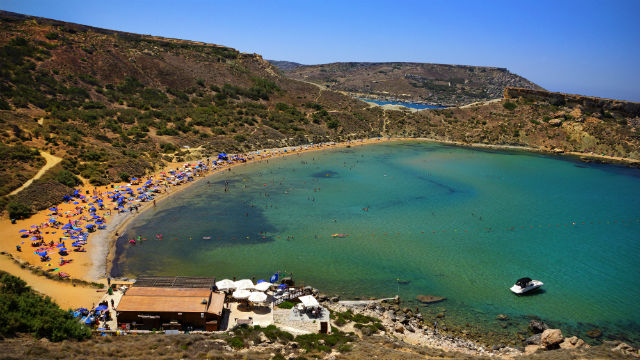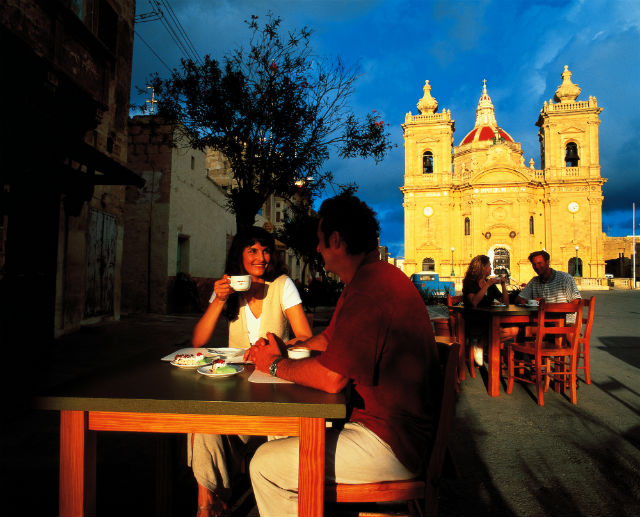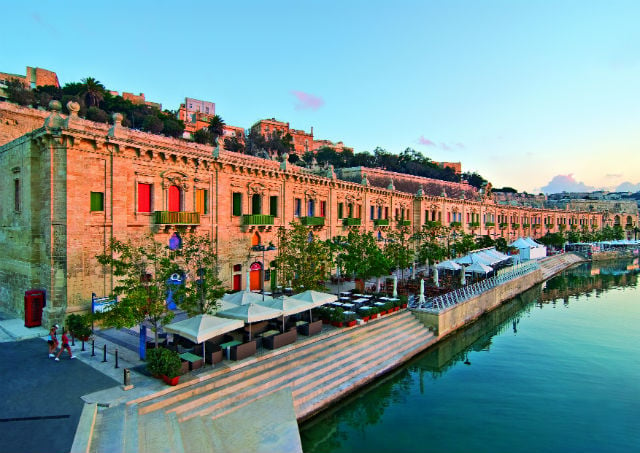This little country is possibly Europe’s best-kept secret
There are some countries that remain an enigma, even when many of us travel the world daily via the internet. Malta is one of those countries, although we’re starting to suspect its mystery may be intentional…

One of many things you probably don’t know about Malta is that it’s an archipelago. Granted, it’s a small archipelago made up of just three islands: Malta, Gozo, and Comino. But when each is as rich with natural beauty and history as the Maltese islands are, three is more than enough.
Planted in turquoise Mediterranean waters, just 90 kilometres south of Sicily and 300 kilometres north of Africa, Malta is a secluded gem with old-world charm. What’s more, with 300 days of sunshine a year and an average temperature of 23 degrees Celsius, it’s a year-round destination.
It’s also an eclectic spot with something for everyone. And we mean everyone. From sun-seekers to history buffs, water sports fanatics to self-confessed foodies.
With megalithic temples older than the Pyramids and Stonehenge (and claimed to be the oldest free-standing structures on Earth), 365 churches and chapels built from the 11th century onwards, spotless beaches, trendy restaurants, hip bars, and a climate that’s been voted “best in the world”, it’s hard to find a single place that offers more.
Find out more about Malta and start planning your trip
Holidaymakers searching for sun can unwind on stretching shorelines bordered by crystal clear seas. Sailing, snorkelling, windsurfing and scuba diving, among other water sports, are on offer, so you can spend a day at the beach even if you’re not a sun worshipper.
 Ghajn Tuffieha beach. Photo: © viewingmalta.com
Ghajn Tuffieha beach. Photo: © viewingmalta.com
Among Malta’s many virtually untouched beaches are Ghajn Tuffieha, a narrow stretch of golden sand that appears to have been frozen in time 2000 years ago; the Blue Lagoon on Comino, a picture-perfect spot with cyan water and breath-taking views of the archipelago; and the red sands and lush greenery at Gozo’s Ramla Bay.
There are ferry terminals on all the islands so you can hop about the archipelago and soak in a view of the vast open ocean along the way. Ferries run all year round and take approximately 20 to 40 minutes each way, so you can easily explore all three islands.
After a day in the sun, you’ll be faced with the challenging task of picking where to eat at one of the many restaurants serving local and international cuisine. And wherever you’re staying -- whether St. Julian in the north or Birzebbugia in the south -- you’ll find a menu to suit your taste.
Order the catch of the day, share a freshly baked pizza, or try traditional Maltese dishes including rabbit stew and widow’s soup, a hearty hotpot with lumps of fresh goat’s cheese.
 Dine at one of Malta's many cafes and restaurants. Photo: © viewingmalta.com
Dine at one of Malta's many cafes and restaurants. Photo: © viewingmalta.com
There’s also an up-and-coming nightlife scene with sleek cocktail lounges, rooftop bars, and late-night clubs -- including a resident DJ spinning tunes at Twenty Two, Malta’s highest nightclub on the twenty-second floor of the Portomaso Tower.
The country’s potential as a party destination hasn’t gone unnoticed. For the past three years Ibiza favourite Annie Mac has chosen Malta to host her pre-summer event, Lost & Found Festival, held each year in May. It’s lured in a whole new type of tourist and spurred on the country’s ongoing efforts to rival popular destinations like Barcelona and Croatia.
But it’s not all beaches, restaurants, and bars. For those of you who like your sunshine holidays with a side of city break, Malta is proof you can have both. Although it’s been independent since 1964, everywhere you look you see well-preserved evidence of the several civilisations that have inhabited Malta over the past 7,000 years.
Read more about everything there is to see and do in Malta
Previously, Malta was a naval base for a succession of superpowers, including the Phoenicians, Romans, Normans, and British, to name just a few. For lovers of culture, this is perhaps one of Malta’s most alluring qualities.
The blend of customs left behind is evident everywhere. From the cuisine (a mix of rustic Mediterranean dishes) and the local language (descended from an extinct variety of Arabic with Italian and French influence -- although English is also widely spoken), to the architecture (a combination of styles from Siculo-Norman to Baroque and neoclassical) and the art (including several Caravaggios painted by the Italian artist during his 15-month stay on the island).
 The waterfront in Valletta. Photo: © viewingmalta.com
The waterfront in Valletta. Photo: © viewingmalta.com
Its capital city is among the three Maltese sites inscribed on the UNESCO World Heritage List. Valletta, known locally as “Il-Belt”, was built in the late Renaissance period and is awash with cultural and historical features. It’s no surprise the city has been named 2018’s European Capital of Culture.
Since earning the title in 2012, Valletta has received a facelift, including the regeneration of Is-Suq tal-Belt, an indoor market built in the 1860s under British rule. Many of its ancient palazzos have also undergone a transformation and are now stylish boutique hotels and apartments.
With all this going on, it’s no wonder Malta likes to retain an air of mystery -- although this gem in the Mediterranean won’t stay hidden for much longer. Visit the country’s official tourism page to find out more and start planning your trip.
This article was produced by The Local Client Studio and sponsored by Visit Malta.
This content was paid for by an advertiser and produced by The Local's Creative Studio.

Join the conversation in our comments section below. Share your own views and experience and if you have a question or suggestion for our journalists then email us at [email protected].
Please keep comments civil, constructive and on topic – and make sure to read our terms of use before getting involved.
Please log in here to leave a comment.